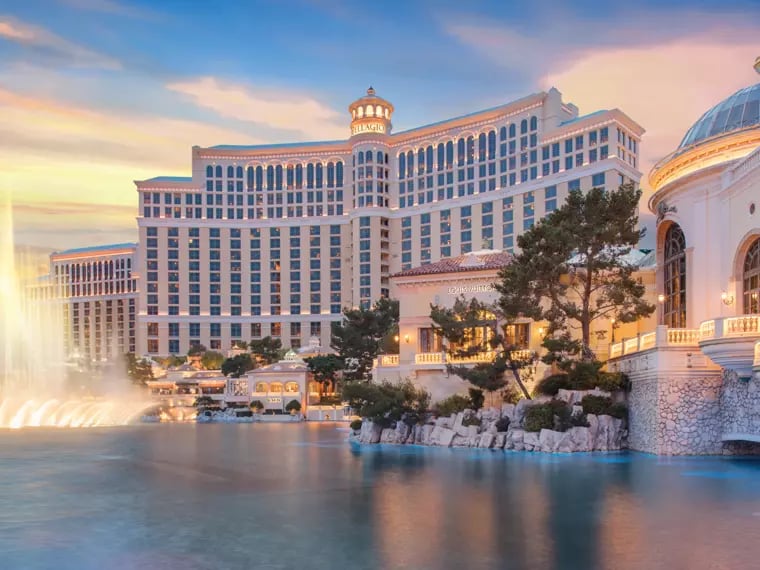MGM Resorts (MGM 0.65%) is going through arguably its biggest strategic change ever, shifting to an "asset-light" business model. The company has sold most of its real estate to MGM Growth Properties (MGP +0.00%), a REIT it controls, and it recently announced it was selling Circus Circus and the real estate of the Bellagio in a pair of deals for a total of about $5 billion. The resulting war chest of cash will give it flexibility that few casino companies can match, but this pivot doesn't come without risk.
A decade ago, real estate was arguably the most valuable asset that casino companies owned. Now, MGM and others are shedding it to raise money, and that tactic will have long-term consequences, both good and bad, for shareholders.

Image source: Getty Images.
The deals
MGM is selling Circus Circus outright to Phil Ruffin, who acquired Treasure Island in the midst of the financial crisis. Ruffin will pay $662.5 million in cash up front, plus a $162.5 million note due in 2024 for the resort, which generated just $62 million in adjusted EBITDA (a proxy for cash flow) over the past 12 months. Circus Circus isn't adjacent to any other MGM properties, and it's downmarket relative to the company's other, higher-end resorts, so its sale isn't surprising, especially given the price that Ruffin was willing to pay.
The sale of Bellagio's real estate is far more surprising. A joint venture with Blackstone Real Estate Income Trust is being formed and will acquire Bellagio's real estate for $4.25 billion. About $4.2 billion of that cash will go to MGM and the company will get a 5% equity interest in the joint venture as well.
For its part, MGM will continue to operate the Bellagio, leasing the resort back for an initial annual rent of $245 million. That's around half of the resort's annual EBITDA.
The asset-light strategy
MGM's goal is to reduce its operating leverage to 1, a sharp shift after decades of being a highly leveraged company. The $5 billion infusion will give the company the ability to pay down debt, return money to shareholders, invest in building a new resort in Japan's soon-to-be-opened gaming market, or some combination of the three. Japan is ultimately the company's best growth opportunity, and given that creating a casino resort there could cost $10 billion or more, it's natural for management to want a hefty quantity of cash on hand.
This asset-light strategy also pairs well with MGM's expansion into sports gambling. Sports gambling doesn't require expensive resorts across the country, it requires technological infrastructure and the right marketing to get one's brand in front of customers. MGM has made deals with the major professional basketball, hockey, and baseball leagues to be their official sports betting partner. If it's successful, MGM will have another business to leverage with little assets invested.
How asset sales can go wrong
MGM's real estate has long been a cushion the company could fall back on in tough times. During the most recent recession, it sold Treasure Island to raise the cash it needed just to stay solvent. But selling a specific cash-generating asset is a tactic a company can't repeat.
And the result is increased operating leverage, which can be good and bad. For each percentage increase in revenue, we would expect a much larger percentage increase in net income, which how leverage works in a company's financials. But the opposite is true as well. If revenue falls, MGM will still have to pay hundreds of millions each year in rent along with operating costs, so earnings will drop quickly.
If the good times keep rolling in the U.S. economy and the gambling industry, an asset-light model will be a great way to boost returns at MGM. But that's no guarantee -- a recession could be just around the corner.






